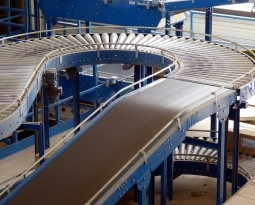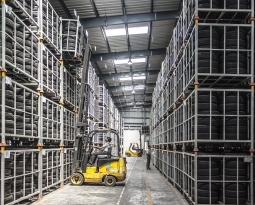West Virginia Patent of the Month – July 2023
Touchstone Research Laboratory, Ltd. (TRL) has developed an innovative method for producing siliconized carbon foam, a breakthrough in material science and engineering. This new method involves blending comminuted coal with particulate silicone resin to create a blended mixture, which is then heated to a specific temperature. During heating, the silicon from the silicone resin reacts with carbon in the coal, resulting in the formation of silicon carbide within the carbon foam.
Siliconized carbon foam has a wide range of applications, including lightweight construction materials, thermal insulation, and energy storage devices. The foam’s unique properties make it a versatile material for various industries.
The process starts with comminuted coal, which is coal that swells upon heating. This type of coal is blended with a polysiloxane resin, a silicone-based compound that provides the necessary silicon for the reaction. The comminuted coal and silicone resin precursor are carefully mixed to form a homogeneous blend.
The blended mixture is then loaded into a mold or pan for further processing. The size and shape of the mold depend on the desired final product. Next, the mold is heated to a temperature sufficient to cause the comminuted coal to swell and form a carbon foam. This foam-forming step can be conducted under atmospheric pressure or controlled pressure in an inert atmosphere.
After the carbon foam is formed, the mold undergoes another heating process to enable the reaction between the silicone resin and carbon. This heating step takes place in an inert atmosphere and reaches temperatures between 1000°C and 2000°C. During this phase, the silicone resin reacts with the carbon in the foam, transforming it into silicon carbide.
The resulting siliconized carbon foam exhibits unique properties, including high strength, low density, and excellent thermal stability. The yield of silicon carbide can range from 50% to 99% based on the amount of silicon from the silicone resin.
TRL’s method offers a direct and efficient way to produce siliconized carbon foam. By utilizing coal and a silicone resin precursor, this process provides a cost-effective and sustainable approach to manufacturing high-performance materials. The versatility of siliconized carbon foam opens up exciting opportunities for advancements in multiple industries, from aerospace and automotive to energy storage and beyond.
Are you developing new technology for an existing application? Did you know your development work could be eligible for the R&D Tax Credit and you can receive up to 14% back on your expenses? Even if your development isn’t successful your work may still qualify for R&D credits (i.e. you don’t need to have a patent to qualify). To find out more, please contact a Swanson Reed R&D Specialist today or check out our free online eligibility test.
Who We Are:
Swanson Reed is one of the U.S.’ largest Specialist R&D tax advisory firms. We manage all facets of the R&D tax credit program, from claim preparation and audit compliance to claim disputes.
Swanson Reed regularly hosts free webinars and provides free IRS CE and CPE credits for CPAs. For more information please visit us at www.swansonreed.com/webinars or contact your usual Swanson Reed representative.

















